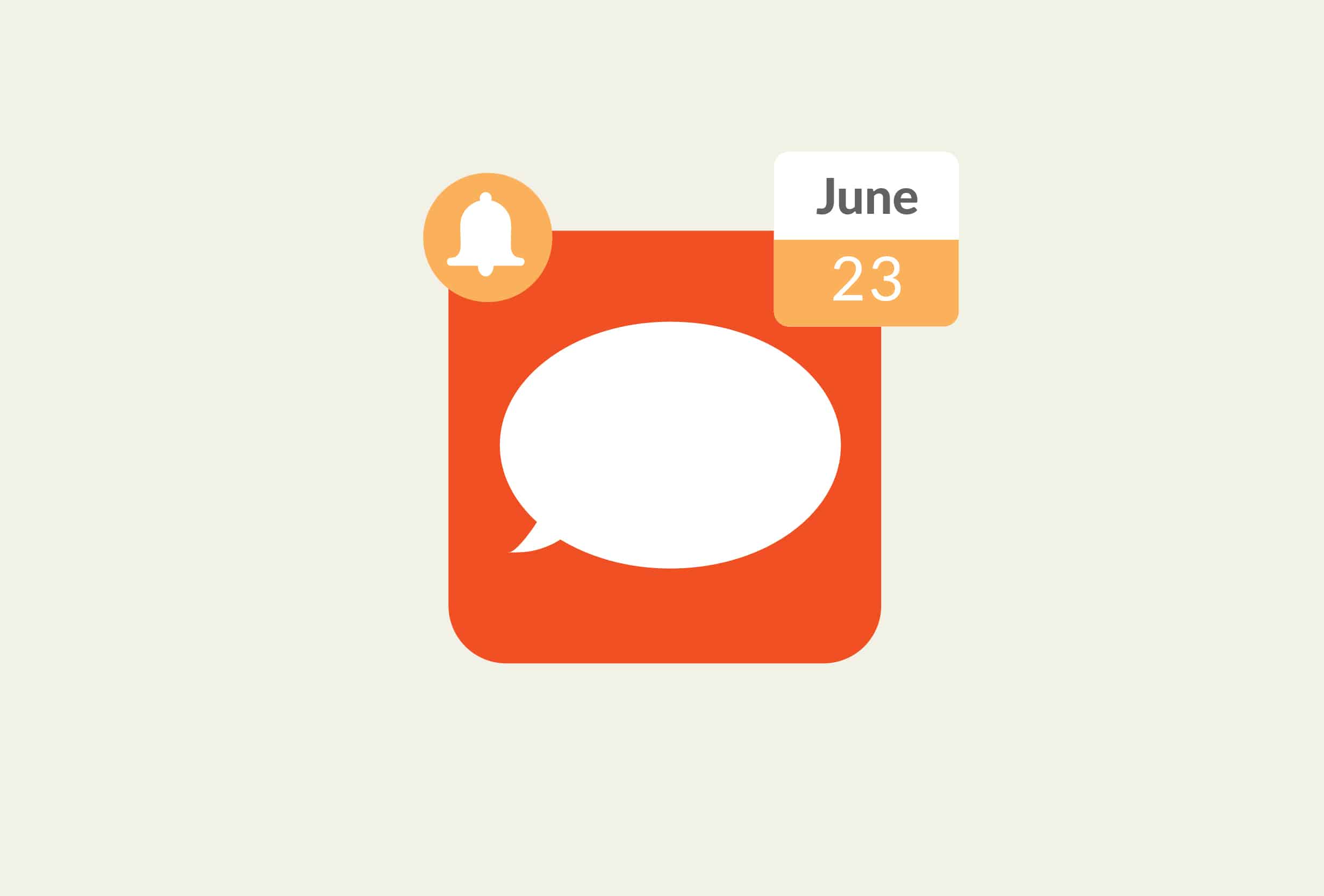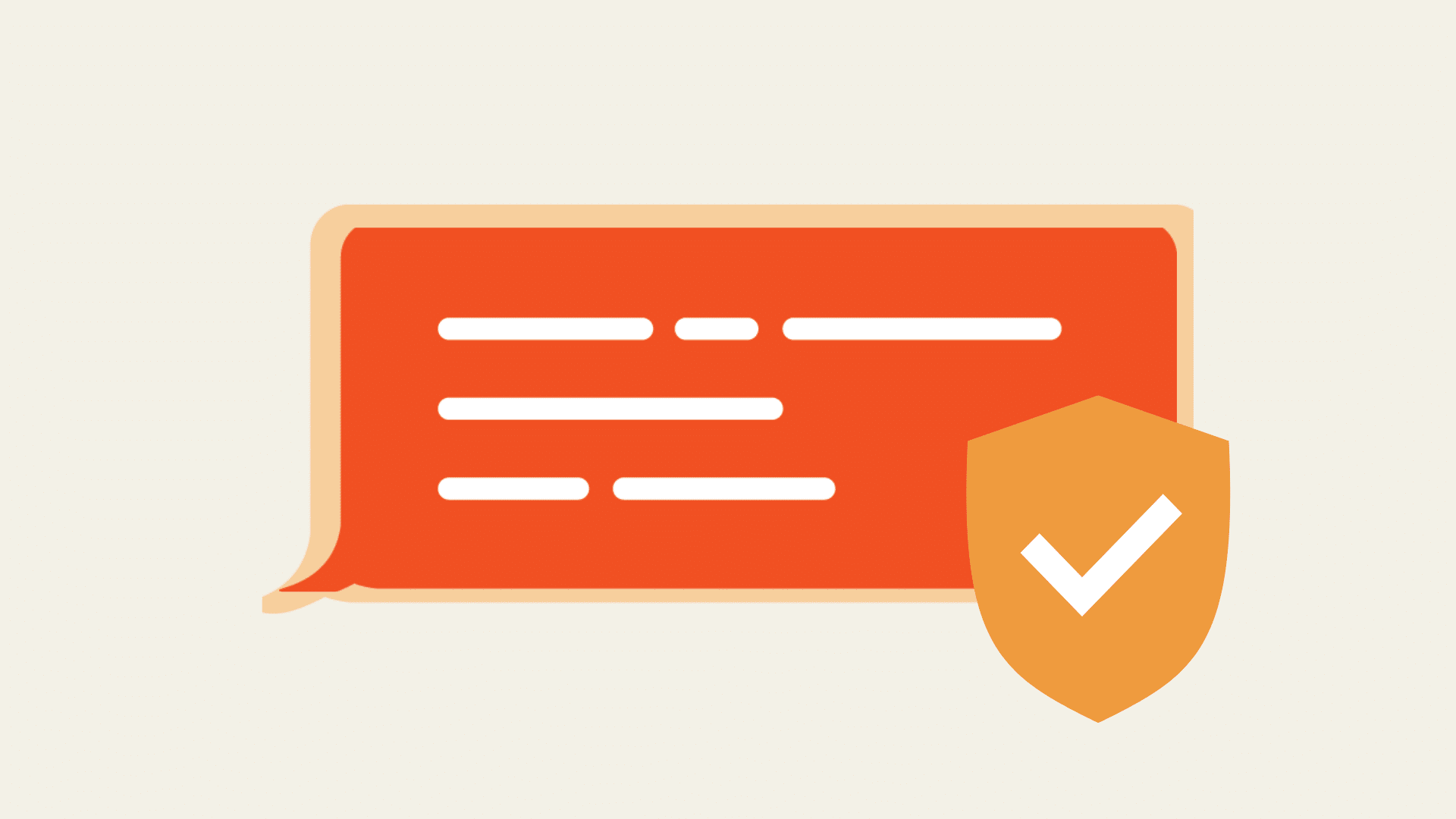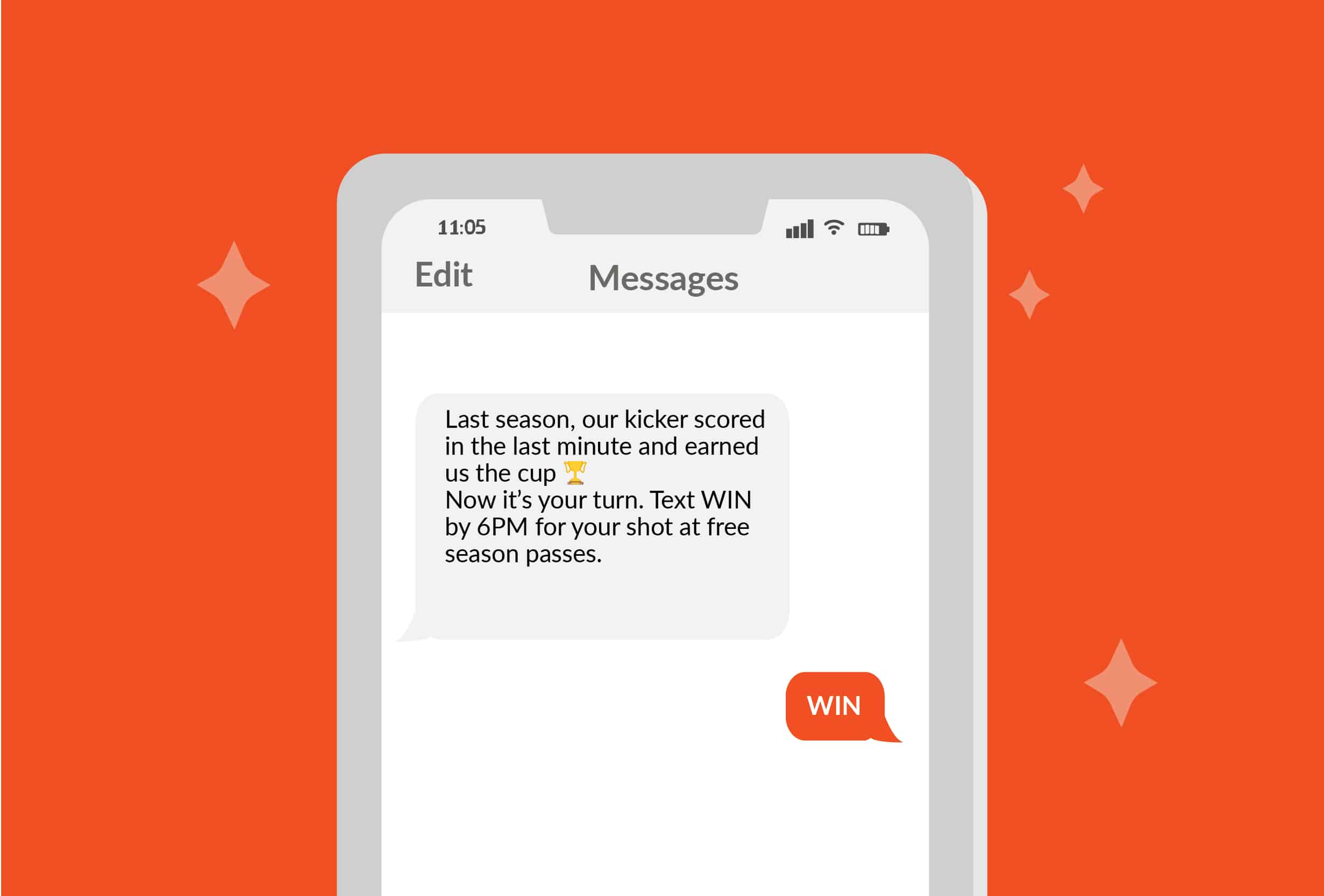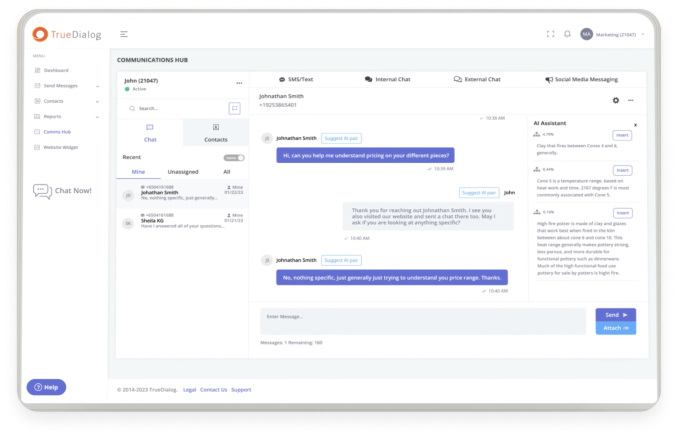There’s no denying that text messaging is one of the most powerful methods of communication to ever exist. It’s simple, nearly instant, asynchronous, significantly less disruptive than a phone call, and has a dramatically high open rate of 98%.
Whether you’re using it for personal or business purposes, it’s hard to imagine a better channel for connecting with contacts and delivering information rapidly and succinctly.
Of course, SMS success involves more than simply typing up a message and pressing “send.” While people may check their mobile notifications several times a day (and even multiple times an hour), you still need to make sure your message arrives at just the right time. Moreover, the right time for one type of message or recipient may not be ideal for another.
This is when scheduling a text message comes in handy.
To help, here’s a step-by-step primer on how to schedule a text message so you can make sure your contacts open your messages and take the right action.
Why Scheduling Texts Matters for Personal and Business Communication
- Ensures timely sends when communicating across time zones
Time zone math can be tricky, and is especially challenging when sending a mass text to several recipients across multiple regions. If you send all messages simultaneously, you risk coming across as disrespectful or disruptive to those who receive the message late at night. And, depending on when messages arrive, you may even accidentally violate federal or state-level quiet hours mandates. For example, the Telephone Consumer Act of 1991 (TCPA) prohibits marketing texts between 9 p.m. and 8 a.m.
By scheduling your messages, you can make sure texts arrive at the opportune time for contacts in each region and comply with local quiet hours regulations.
- Supports better time management
Scheduling your SMS messages allows you to plan and batch your texts whenever it makes the most sense for your schedule, which ensures nothing slips through the cracks.
For example, suppose you work for a financial advising firm and want to send 24-hour appointment reminders to all clients scheduled to meet with your team. Taking the time to write and send each reminder exactly 24 hours before each appointment would be disruptive to your workday (not to mention exhausting), and there’s a good chance you would forget someone. However, if you choose to schedule your messages, you could batch create all of the appointment reminders for the week ahead and then queue up the texts to automatically deliver at the appropriate time for each client.
- Allows you to work more proactively
If you have a high-priority project coming down the pipeline, scheduling texts now can free up resources to tackle that energy-intensive item.
For example, imagine you’re a marketer at a software company and preparing for a major product launch. To support the effort, you plan to send a series of texts: an announcement, a live demo invitation, and a discount code encouraging existing customers to upgrade. However, you also have several other duties during launch week, including an email campaign, a sales enablement session, and an in-person event. By scheduling the texts ahead of time, you can open up space in your schedule (and mind) to focus on your other to-dos.
- Reduces the risk of forgetting to send a message
Sometimes the moment we remember a message we need to share isn’t the most inopportune time to send a text — and making a “mental note” isn’t always sufficient.
Scheduling a text allows you to draft messages while they’re fresh in your mind and deliver them at the ideal time for your contacts. This approach is particularly helpful if you frequently forget to send birthday greetings, or when you wake up in a panic at 2 a.m. because you forgot to ask a colleague to pick up bagels for the morning meeting.
How to Schedule a Text Message on Your Phone
Most of us can imagine plenty of situations in which we could benefit from scheduling a text to a family member or a friend — and, fortunately, it’s relatively simple to schedule and send messages from your personal device.
Here’s how to send a scheduled text from an Android, iPhone, or third-party app:
-
Scheduling a Text on Android
Android makes it easy to schedule texts. Here’s how:
-
- Open the Messages app, start a chat, and select the recipient(s) you want to reach.
-
- Type your message as you normally would.
-
- Carefully long-press the Send button until a pop-up appears.
-
- From the pop-up, select a pre-populated time or set a custom time.
-
- Review the text and time to ensure the information is correct, and then tap Send.
-
Scheduling a Text on iPhone
In the past, iPhone users had to rely on third-party tools to schedule messages, but last year, Apple released a new feature called “Send Later” as part of its iOS 18 update. Here’s how it works:
-
- Open the Messages app, start a new message, and add the recipient(s) you want to reach.
- Open the Messages app, start a new message, and add the recipient(s) you want to reach.
-
- Tap the + button to the left of the message field and select Send Later.
- Tap the + button to the left of the message field and select Send Later.
-
- The scheduler will choose a default time. Tap the preset time to change it.
- The scheduler will choose a default time. Tap the preset time to change it.
-
- Enter your message.
- Enter your message.
-
- Review the text and time to ensure the information is correct, then tap the Send button.
-
Using Third-Party Apps for Scheduling
If your phone’s operating system or preferred texting platform does not allow scheduled texts or you’d like an option with more features (such as personalized auto-replies, recurring scheduled messages, and other customizations), consider using a third-party app.
A few popular mobile text message scheduler apps include:
-
- Pulse SMS
- Scheduled
- AutoText
- Chomp SMS
- Do It Later
Keep in mind that text scheduling functionality may vary depending on your device and carrier. Additionally, not all third-party apps offer the same features or privacy protections, so it’s important you do your due diligence — particularly if you plan to send sensitive personal information.
How to Schedule a Text Message with Business SMS Software
Scheduling a text from your phone can be handy for personal communications, but it’s not an efficient or sensible option for business purposes.
For example, suppose you’re working in a college admissions office and want to remind all incoming first-year students to sign up for an upcoming orientation session. Or, perhaps you manage the client support team at a software company and want to send a welcome text to all new users that encourages them to complete an onboarding checklist.
Manually creating and scheduling texts to a significant number of contacts is cumbersome and could quickly take over your workday. Additionally, most third-party mobile apps were developed for personal use and typically cannot handle scheduling a large volume of messages, ensure compliance with regulations, or protect user privacy at the same level as an enterprise solution.
In those cases, business SMS software is a better fit.
-
Scheduling Texts Using Campaign Automation and APIs
One of the greatest benefits of using a top-tier business SMS platform is access to automation functionality. For example, TrueDialog blends seamlessly into your tech stack, integrating with popular sales, marketing, and customer service automation tools like HubSpot, Marketo, Eloqua, MS Dynamics, Salesforce, (and more). This helps streamline sends (which is essential when you’re scheduling several hundred texts at a time), makes it easier to trigger texts as part of marketing workflows, ensures better reporting, and eliminates the headaches associated with toggling back and forth between two or more solutions.
Additionally, by choosing a platform with powerful SMS APIs, you can enjoy practically unlimited functionality. Beyond sales and marketing messages, you can also use APIs to enable product notifications, delivery updates, or appointment reminders.
If your SMS solution integrates with your customer service software, you could set up a workflow that sends a message to contacts who have submitted a service request, letting them know you’ve received their request and will be in touch shortly. Or, if you connect your SMS platform with your shipping and logistics software, you can send scheduled text messages when a customer’s package has shipped and when it arrives.
Thanks to personalization tokens, you can even personalize your triggered sends. For example, if a contact responds to an appointment reminder with a confirmation, you can configure your campaign settings to send a response acknowledging their confirmation. I.e., “Thanks for confirming your appointment, Daniel. We look forward to seeing you at 1 p.m. tomorrow!”
-
Advantages Over Phone-Based Scheduling
Business SMS solutions offer plenty of other benefits to maximize efficiency, boost engagement, and streamline the message scheduling process.
In addition to tech stack integrations, here are a few more reasons to invest in a mass texting service for businesses:
-
- Centralized dashboard
Instead of endlessly scrolling through countless text threads, this type of SMS platform organizes all campaigns and text communications into a single dashboard. That way, you’ll have a bird’s-eye view of your efforts and can easily plan scheduled texts.
- Centralized dashboard
-
- Easy segmentation
Most SMS solutions give you the power to segment your contacts into lists based on relevant criteria — such as geographic location, stage in the sales cycle, and more.
For example, suppose a regional bank wants to send loan payment reminders, but customers are on different schedules. (i.e., Some payments are due on the first of the month while others are due on the 15th.) By segmenting its customers by payment due date, the bank can easily schedule bulk reminders and help its customers avoid late fees.
- Easy segmentation
-
- Simple contact list management
Keeping your contact list clean and up-to-date helps improve campaign metrics and supports your sender reputation score (and, by default, your deliverability). A great SMS solution will offer features to easily fix number formatting inconsistencies, validate numbers with carrier lookups, and automate opt-in and opt-out workflows.
- Simple contact list management
-
- Privacy, security, and compliance
Data encryption, multi-factor authentication, and role-based access controls are just a few security features you’ll find with top-rated business SMS solutions. The best tools are also SOC 2 and FedRamp compliant to further protect your contacts’ data and confidentiality.
This is especially important to keep in mind as you evaluate SMS marketing pricing. Extra-low pricing can seem attractive until you realize your text software provider is leaving you and your contacts vulnerable to security breaches or failing to ensure your communications meet compliance standards. In those cases, the risks far outweigh any potential savings.
- Privacy, security, and compliance
-
- Accessible support
Even if a tool is user-friendly and easy to navigate, you’ll inevitably have questions or concerns that require the support of a real, live human. With phone-based scheduling apps, you may not be able to get the help you need — and even if you can, their support team may not have the resources to assist with business-related needs. TrueDialog, however, offers fast and reliable support, and our U.S. based team of SMS experts has plenty of experience navigating the obstacles modern organizations face. (Which is just one of the reasons we’re consistently ranked as a top SMS platform on G2.)
- Accessible support
Best Practices for Scheduling Text Messages
Here are a few pointers to help you maximize your success when using an SMS platform to schedule messages:
- Schedule texts when recipients are most likely to engage
In addition to keeping your texts within the 8 a.m. to 9 p.m. window, send messages during prime engagement times. In most cases, that means mid-morning (between 9 a.m. and noon) or in the after-work sweet spot (between 5 p.m. and 9 p.m.) Depending on the campaign and your audience, you may also find greater success with weekend sends. If you’re not sure when to send, consult previous campaigns and review the data for trends in engagement.
- Use data to help refine your campaigns
Speaking of data, be sure you take time to check campaign performance metrics and apply those learning to future sends. A/B testing messages (i.e., sending two versions of a message to two separate lists) is a great way to learn more about your audience’s preferences. For example, you might find that messages receive more engagement when you schedule them for early evening delivery or if you send a message where the recipient’s name appears in the text preview.
- Personalize messages to help boost opens
In addition to including recipients’ names in your text, look for other ways to personalize messages. For example, instead of simply reminding students they have an advisement appointment scheduled, a university might also include details about where the session will take place, who it will be with, and the appointment’s purpose.
For example, “Hi Jasmine! Don’t forget your advising appointment with Dr. Garcia tomorrow at 3 p.m. in Room 304 of the Arts & Sciences building. Attending this session is required to register for your fall semester courses.”
- Avoid over-communicating
Sending too many texts is a sure-fire way to land your brand on a contact’s block list. At the very least, recipients may silence notifications from your number or miss crucial reminders from your organization within the torrent of promotional notifications.
While the ideal number of messages varies depending on purpose, you should refrain from sending more than one marketing message per week — especially if you’re also sending other types of texts. For example, if a credit union has already sent contacts a text promoting high-yield savings accounts, the institution may reschedule other promotions for a different week. However, late payment notifications and appointment reminders are still fine to send.
- Make sure you follow up with responses
Text messaging provides organizations with a rare opportunity for one-to-one audience communication, and responding to contacts’ replies is critical to building trust and ensuring long-term brand loyalty. Of course, when you’re managing thousands of conversations, you and your team may not have the capacity to write a personal response to every reply.
In some cases, pre-written triggered responses can be enough. (For example, verifying that you’ve received a contact’s appointment confirmation.) However, when it comes to addressing specific questions or concerns, you may want to prepare automated responses that direct contacts to an email address or customer service portal.
Knowing how to schedule send a text can make your life much easier, especially when sending texts on behalf of an organization. Of course, while manually scheduling individual texts or using third-party phone-based scheduling apps works well for personal communications, adopting a business SMS platform is a much better choice for bulk text scheduling. TrueDialog makes it easy to schedule personalized texts to thousands of contacts and is specifically designed to support marketing teams, customer support, and sales initiatives. By choosing a powerful SMS platform that works with businesses like yours, you can help improve engagement and make scheduled sends a breeze.





